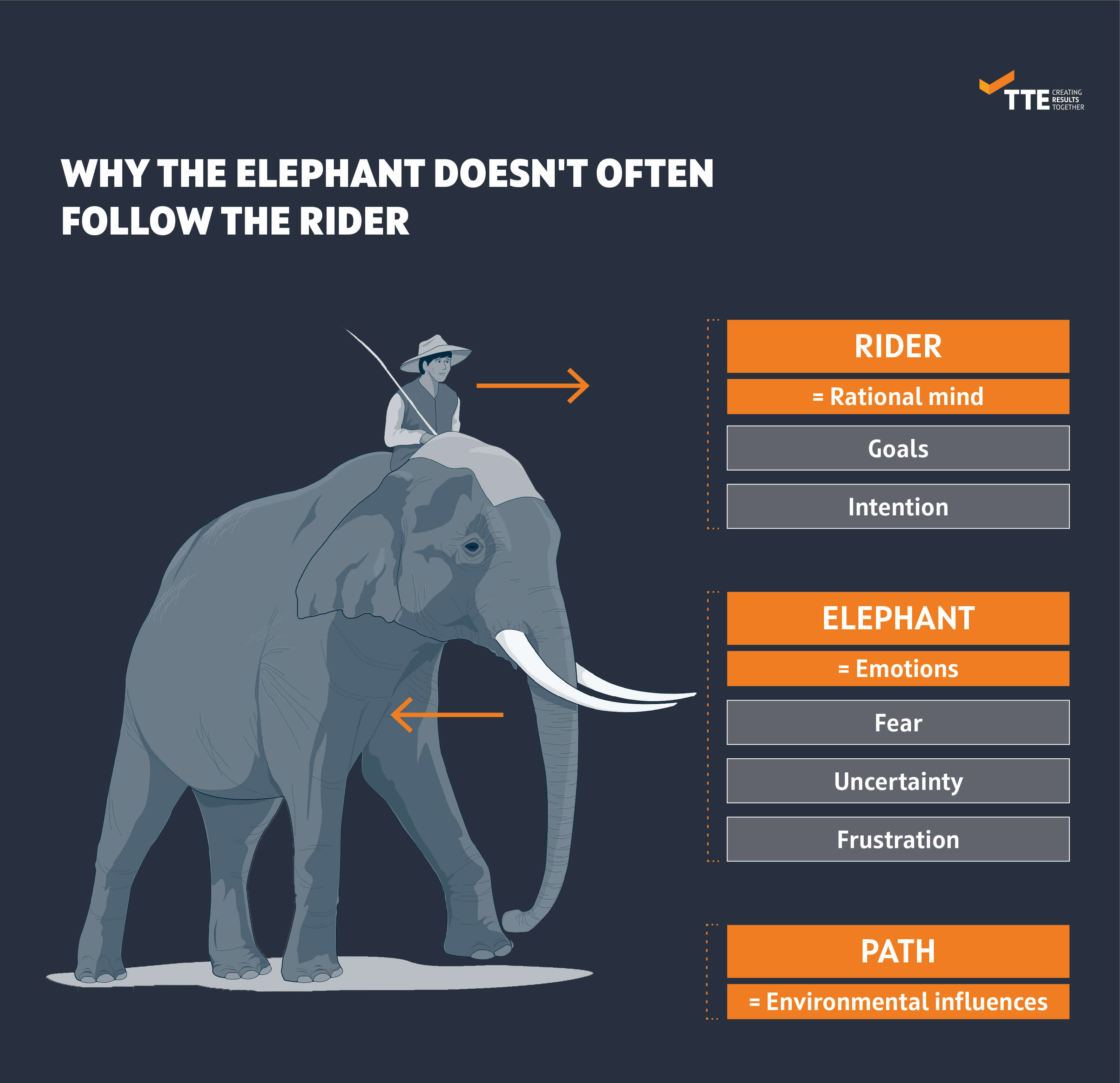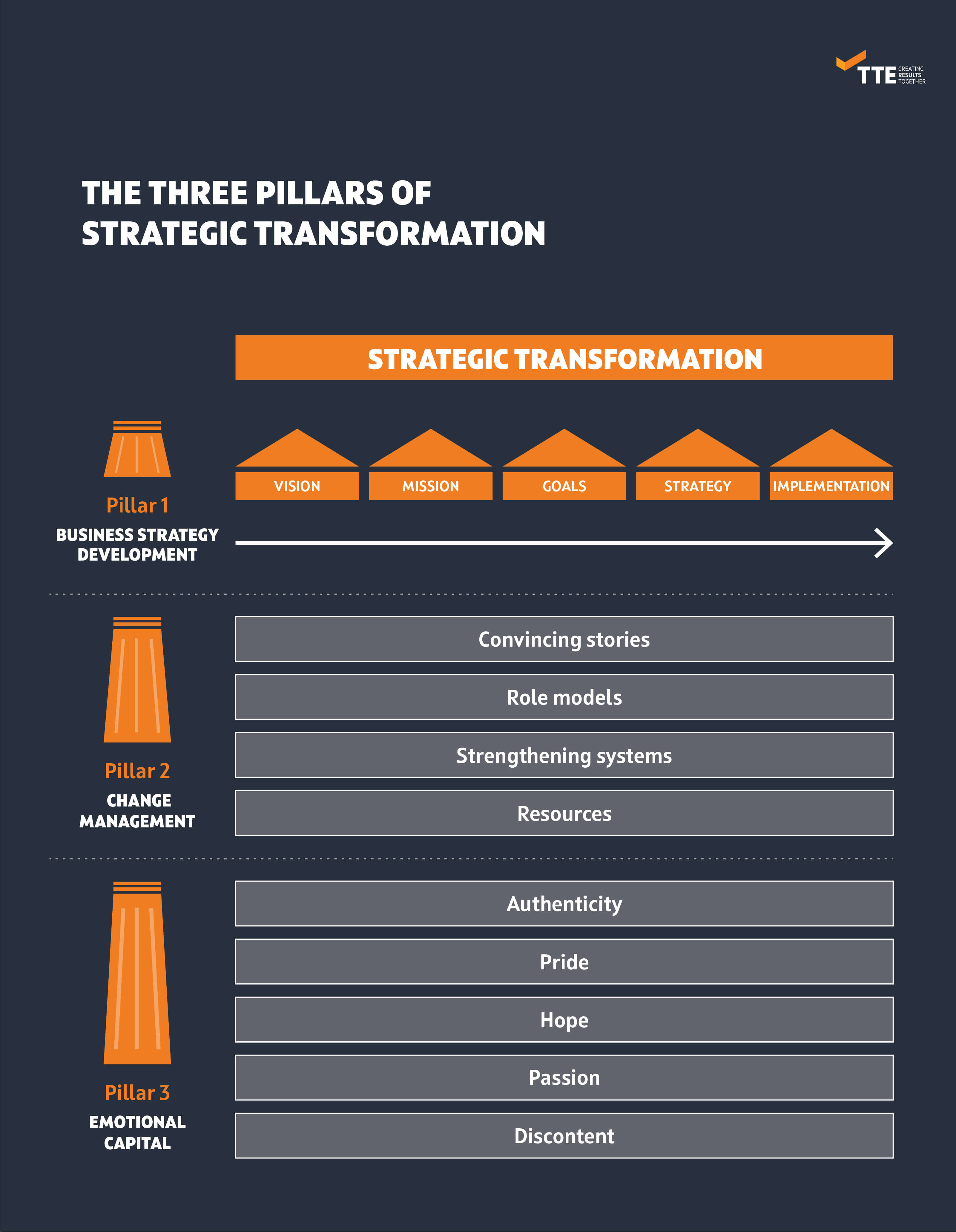
You read about it in the news and on social networks. You hear it in video calls with your stakeholders and you may even see it when looking at the mirror in the morning: fear, insecurity and frustration. These negative emotions are part and parcel of every crisis, and the coronavirus has caused them to emerge once again. After all, a crisis like the current one has turned many things upside down. What has been holding us up until now disappeared into thin air overnight. We are facing a completely new starting point that we cannot fully assess yet. Thoughts like “I’m afraid of losing my job”, “I don’t know what to do next” and “I have no influence whatsoever on what is happening” are completely understandable.
You may now shrug your shoulders and think: “That’s just how it is, you have to get through it.” However, doing so would make it too easy for yourself. It is precisely these fears that have the potential to slow down or even completely block your transformation projects.
Human emotions are not the problem here. They are normal and, to a certain extent, even healthy. After all, no one wants employees who take risks without any fear or who completely overestimate themselves due to a false sense of security.
Worries and uncertainty only become an obstacle to your strategic transformation if they remain hidden and you do not approach them constructively. Let’s take a look at exactly what is happening here.

Imagine that you are the rider sitting on top of the elephant’s back. As you observe the path and the environment around you, you decide on a sensible course. You give instructions and expect the elephant to follow them. And then, all of a sudden, you find yourself in the jungle.
What mistake did you make? As the rider, you may have a goal in mind and set the direction. On the way there, however, a second enormous force comes into play: the elephant.
The elephant represents the emotional side of the mind. It is the home of all hopes, doubts and feelings that we do not admit to ourselves. Even though the rider (= the rational mind) has done everything right, it often cannot compete with the power of the elephant.
As a C-level executive, this scenario applies in yet another sense. This is because you don’t only have to deal with your own emotions, but also those of your employees. You set the direction, but whether you achieve your strategic goals or not depends largely on the elephants, i.e. the wishes, worries and fears of your employees.

Despite tracking, smart thinking and execution according to the textbook, many transformation projects fail. In our experience, the trap of power is partly responsible for this: business leaders feel a power that they do not possess to this extent. They imagine that wanting something, formulating it as a goal and then initiating the implementation process would be sufficient. However, fear, uncertainty and frustration act like invisible brake pads that prevent projects from gaining momentum. As a C-level, you are well advised not to let emotional capital lie idle, but rather to approach every transformation in a holistic manner.
Holistic, strategic transformation means using emotional levers alongside the development of a strategy and the measures of change management.
Based on the research of Prof. Quy Huy, we at TTE adopt a 3-pillar approach that combines the rational side of the mind with the emotional side. This way, previously inhibiting feelings become real drivers of transformation.
This pillar is your bread and butter as a C-level manager. It’s all about the what, why and how of the path that leads your company to its goals. As part of this, you define the concrete measures of this path, such as vision, mission, goals, strategy and implementation.
In our experience, traditional methods of change management are not sufficient to bring about real change. For this reason, the measures of this pillar drive change in an unconventional way. The following components are crucial:
This pillar deals explicitly with the thinking of the right side of the brain. Here we develop approaches to directly address the emotions of stakeholders. These are based on the five levers of emotional capital developed by Prof. Quy Huy and deal specifically with the qualities of authenticity, pride, hope, passion and discontent (Huy, 2018, Emotional Capital as Strategy). Let’s take a closer look at this third pillar.
Your strategic projects will be much more successful if you emotionally involve your stakeholders. This means addressing any negative feelings and transforming them into positive emotional levers such as authenticity, pride, hope, passion and discontent. There are three steps to this:
Authenticity: Frustration and insecurity often arise from a distance between what is experienced and what is requested. “I am here, the goal is there, but there is no connection”. Clear goals and responsibilities as well as an open challenge culture create emotional connection and closeness. This makes work feel “real” and authentic again.
Pride: If resignation lasts too long, an attitude of “I don’t really care” begins to emerge. By promoting a functional identity, you will instill pride in your stakeholders about their work. Be courageous and strive for industry leadership. Give them a goal that’s worth standing up for.
Hope: Uncertainty makes hope wane: “I don’t know what I’m doing here and what is coming next.” If your employees give up hope, you only unleash a fraction of their potential. Therefore, establish a fair process to which all their ideas can contribute. Make investments in your people and projects, plan for the long term and involve the new generation.
Passion: As a manager, you know the subtle difference between commitment and passion. You achieve the latter by giving your employees development freedom and by breaking down large tasks into small, promising tasks.
Discontent: It’s important that your projects aren’t drowned by positive emotions. After all, when everyone feels good and understands each other, the demand for the best possible results quickly drops. In short, there is no breath of fresh air anywhere. For this reason, dare to encourage disagreement by asking for constructive criticism, challenging your middle managers and setting stretch goals.
Earlier we mentioned the trap of power. In addition to this, we often observe another trap, namely the trap of familiarity. Managers are simply too familiar and too close to their projects, employees and their own well-being to deal with them constructively on an emotional level. Blind spots are often only recognized from a distance.
What’s more, the current changes are reaching such a drastic level that even experienced C-level managers may be tempted to fear. Struggling through this alone is not only inefficient; it is also dangerous for your transformation processes.
Get a partner like TTE on your side.
We bring the know-how and a fresh view of the company’s internal dynamics and support you personally in your current challenges. As a reliable partner, we are 100% there for you in both the fact-based and the soft, emotional aspects of strategic transformation. Get in touch with us and experience the difference!


TTE Strategy